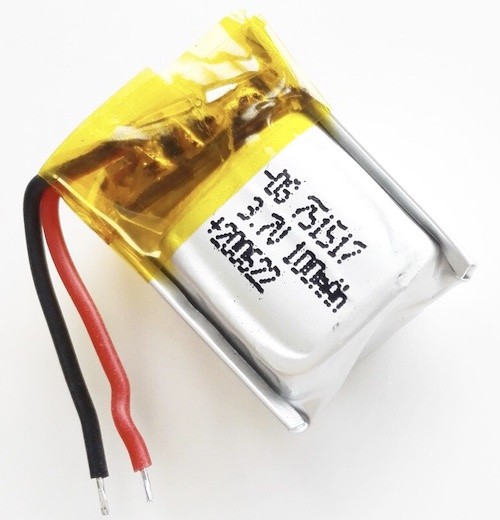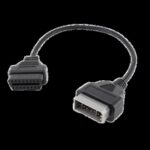Are you experiencing frustrating issues with your Anki Overdrive car not scanning the track? It’s a common problem that can quickly derail your racing fun. While there could be several reasons behind this, one often overlooked culprit is the car’s battery. Like any rechargeable battery, the LiPo batteries in Anki Overdrive cars degrade over time, leading to performance issues, including track scanning failures.
In this guide, we, as car repair experts at carcodepro.com, will walk you through a step-by-step process to replace the battery in your Anki Overdrive car. This DIY fix can revitalize your car, potentially solving track scanning problems and even boosting its performance with an upgraded battery. Before we dive in, please be aware that this modification may void your warranty and should be performed at your own risk. Ensure you have basic DIY skills and are comfortable working with electronics before proceeding.
Many users, including myself, have encountered battery issues with Anki Overdrive cars. In my case, one of my cars started showing battery warnings and quickly losing power even after short runs. Suspecting a faulty battery, I decided to investigate. Inspired by the repair-friendly design of Anki products, highlighted in this iFixit teardown of older Anki Drive cars which gave them an 8/10 repairability score, I felt confident in attempting a battery replacement.
The result was fantastic! Not only did the battery replacement fix the power issue, but by using a higher capacity battery, the car now runs longer than before. Let’s get started on how you can achieve the same result.
Identifying the Battery Issue
Before you start taking apart your car, it’s helpful to confirm if the battery is indeed the problem. Common signs of a failing Anki Overdrive car battery include:
- Rapid battery drain: The car loses charge quickly and needs frequent recharging.
- Battery warnings: The app displays low battery warnings even after seemingly full charges.
- Slow performance: The car feels sluggish and doesn’t accelerate as quickly.
- Track scanning problems: The car struggles to recognize or consistently follow the track, indicated by erratic movement or failure to start races.
- Bloated battery: In some cases, you might observe a physically swollen or bloated battery pack if you open the car (as we will show later). Note: Do not puncture or handle bloated LiPo batteries roughly as they can be hazardous.
If you are experiencing track scanning issues alongside any of these battery-related symptoms, battery replacement is a strong potential solution.
Gathering Your Tools and Parts
To perform this battery replacement, you will need the following:
- Small Phillips head screwdriver: To open the car.
- Soldering iron and solder: For desoldering and soldering battery wires.
- Desoldering wick or pump (optional but recommended): To clean up solder joints.
- Replacement LiPo battery: A 3.7V LiPo battery with similar dimensions to the original. The original battery is around 70mAh, but you can upgrade to a 100mAh battery for extended playtime. You can find suitable replacement batteries from online electronics retailers.
- Tape: Electrical tape or Kapton tape to insulate wires.
- Double-sided tape or tape loop: To secure the new battery.
- Replacement battery (Affiliate link – using coupon SQUIX-ANKI may offer a discount and supports our blog).
Image: A replacement LiPo battery suitable for Anki Overdrive car battery replacement.
Step-by-Step Battery Replacement Guide
Let’s get into the process of replacing the battery.
1. Opening the Car:
Turn your Anki Overdrive car upside down. You’ll see three screws. The largest screw, located at the front of the car, is the one you need to remove to take off the hood. Unscrew it.
2. Removing the Hood:
Once the screw is removed, gently lift and detach the car’s hood. It should come off easily.
3. Accessing the PCB:
With the hood removed, you’ll see the Printed Circuit Board (PCB). It’s held in place by small latches on the sides and hooks at the back. Carefully release these latches. Use a small, flat tool or your fingernail to gently pry them open.
4. Lifting the PCB:
Once the latches are released, carefully lift the PCB. Be cautious as there are delicate wires connecting the PCB to the motors at the back of the car. Do not attempt to completely detach the PCB from the black plastic chassis. The motors will remain connected during the battery replacement.
Image: An Anki Overdrive car with the PCB partially lifted after removing the hood, showing internal components.
5. Locating the Battery:
With the PCB lifted, you can now clearly see the LiPo battery. It’s usually located in the center of the PCB. You might also notice two forked light barriers nearby, which are part of the track scanning system. In my case, I also observed that the original LiPo battery was slightly bloated, further confirming it was failing.
6. Desoldering the Old Battery:
Heat up your soldering iron. Carefully desolder the two wires (red and black) connecting the battery to the PCB. It’s best to desolder one wire at a time. Use a desoldering wick or pump to remove excess solder for a cleaner joint. To prevent short circuits, insulate the end of the first desoldered wire with tape so it doesn’t accidentally touch any PCB components.
7. Soldering the New Battery:
Now, take your new LiPo battery. Solder the wires of the new battery to the same pads on the PCB where you removed the old battery. Ensure you connect the red wire to the positive (+) pad and the black wire to the negative (-) pad. Double-check the polarity before soldering. Again, work carefully to avoid accidental shorts. Consider using tape or a “third hand” tool to hold wires in place during soldering.
Image: The new replacement battery soldered in place on the Anki Overdrive car PCB.
8. Securing the Battery and Reassembling:
Use double-sided tape or create a tape loop to secure the new battery to the PCB in roughly the same position as the original. When reassembling, make sure the end of the battery is near the optical sensor (light barrier). Carefully slide the PCB back into the chassis hinge at the rear of the car. Ensure the motor wires are correctly positioned in their slots. Gently push the PCB down until it clicks back under the side latches. If your new battery is slightly larger, the PCB might not sit perfectly flush, but this is usually not a problem.
9. Reattaching the Hood:
Finally, place the hood back on the car and secure it with the screw you removed earlier.
Testing and Troubleshooting
Now it’s time to test your repaired Anki Overdrive car! Set up a track and pair the car with your Anki Overdrive app.
Testing:
Run a race or battle mode to test the battery capacity and overall car function. In my initial test, the car worked perfectly right away. I tested in “Battle” mode to drain the batteries, and the car with the new battery ran significantly longer without any low battery warnings compared to a stock car. This indicates a successful battery replacement and potential performance improvement.
Troubleshooting Track Scanning Issues:
If, after battery replacement, you still experience track scanning problems, or if the car seems unable to read the track after reassembly, don’t worry. This can sometimes happen. The most likely cause is that the forked light barrier sensor might not be correctly aligned or something is obstructing it.
In such cases:
- Re-open the car: Carefully open the car again as described in the steps above.
- Check sensor alignment: Ensure the forked light barrier is clean and not obstructed. Make sure it’s positioned correctly and that wires aren’t blocking the light path.
- Inspect wiring: Double-check all your solder joints and wiring connections. Loose connections or accidental shorts can cause issues.
- Reassemble carefully: Reassemble the car again, paying close attention to the sensor and wire placement.
In my experience, after re-opening the car and ensuring everything was correctly positioned, the track scanning issue was resolved.
Conclusion: Revive Your Anki Overdrive Car
Replacing the battery in your Anki Overdrive car is a straightforward DIY repair that can bring a seemingly broken car back to life. It’s a cost-effective solution compared to buying a new car, especially if you suspect battery issues are causing problems like track scanning failures or poor performance. For a small investment in a replacement battery and a little bit of your time, you can significantly extend the life and enjoyment of your Anki Overdrive set.
While this guide focuses on battery replacement as a potential solution for “Anki Overdrive Car Not Scanning Track” issues, remember that other factors can also cause track scanning problems. However, if your car is showing signs of battery degradation, replacement is a worthwhile step to try.
We encourage you to share your experiences in the comments below if you attempt this battery replacement. Your feedback can help other Anki Overdrive enthusiasts and contribute to our community of DIY car repair experts at carcodepro.com!


